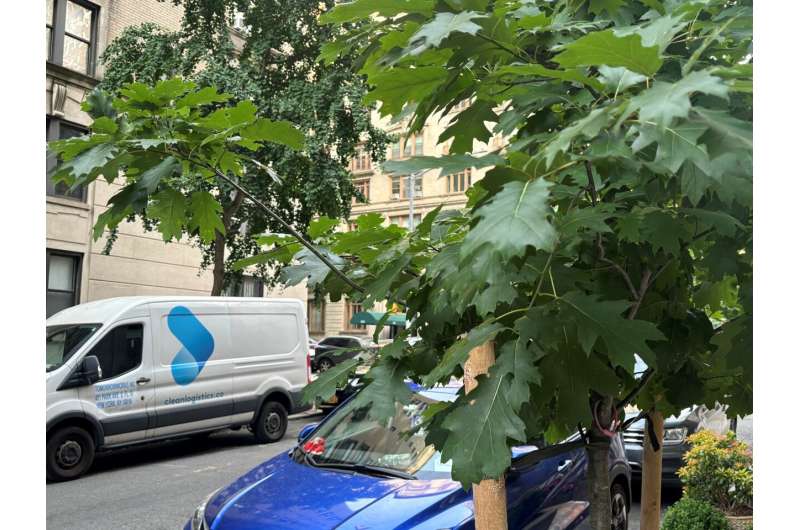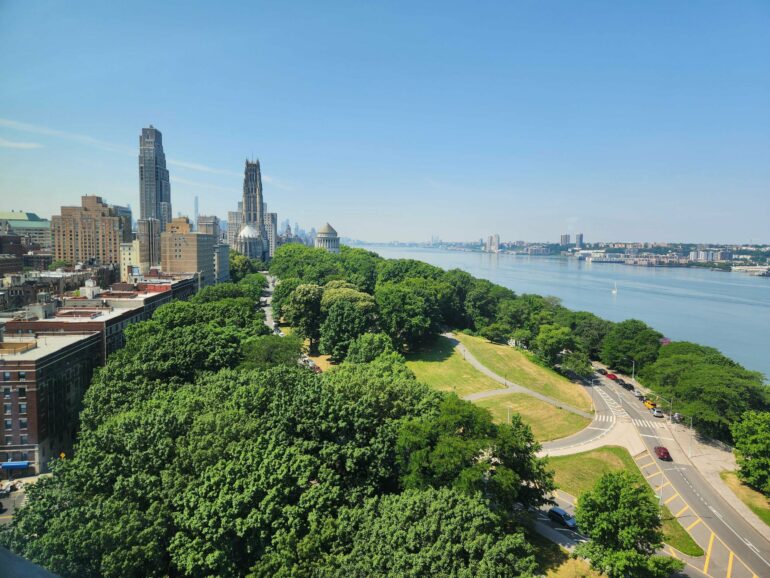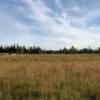In line with longstanding initiatives to expand its green spaces, New York City is planting tens of thousands of trees each year. They provide shade, lower surface temperatures by releasing moisture, absorb a surprising amount of airborne carbon, scrub out soot and other floating pollutants, and provide wildlife habitat along with just plain beauty. What could go wrong?
Actually, something could go wrong, according to a new study. Oaks and sweetgums, which currently account for a majority of the city’s trees, produce huge amounts of volatile compounds called isoprenes. Harmless by themselves, isoprenes interact rapidly with polluting nitrogen oxides emitted by vehicles, buildings and industry to form ground-level ozone―a prime factor in many respiratory ailments, especially chronic bronchitis and asthma.
The research, carried out by scientists at the Columbia Climate School’s Lamont-Doherty Earth Observatory and other institutions, found that if the city maintains past species patterns in new plantings, isoprene production in Manhattan in coming decades will go up by about 140%, and resulting summer ozone levels as much as 30%.
In Queens, which has the most room of any borough for more trees, isoprene production could quadruple, with corresponding increases in peak ozone; the other boroughs are somewhere in between. The study was just published in the journal Environmental Science & Technology.
“We’re all for planting more trees. They bring so many good things,” said study co-author Róisín Commane, an atmospheric chemist at Lamont-Doherty. “But if we’re not careful, we could make air quality worse.”
“There is no reason to think that trees don’t play a role in what’s in the air,” said lead author Dandan Wei, who did the research as a postdoctoral scientist at Lamont-Doherty. “We just didn’t have the tools before this to understand this particular aspect.”
The leaves of some tree species emit isoprene as a byproduct of photosynthesis, though no one is quite sure why. With oaks, emissions tend to increase exponentially with heat, at least until air temperatures reach the high 90s. Some scientists think this helps keep leaf tissues from drooping and losing their ability to photosynthesize as it gets hotter.
Emissions of these and other volatile compounds by trees may also have something to do with attracting pollinating insects. For whatever reason, oaks and sweetgums are especially prolific; oaks emit some 800 times more isoprene than low emitters like maples or London planes. (Fun fact: the oak-rich Blue Ridge Mountains get their bluish tinge when seen from afar due to vast amounts of isoprene and other volatile compounds reacting indirectly with water to form tiny floating droplets.)
New York City is home to some seven million trees, covering 22% of the surface, according to the city Parks Department, which controls planting and maintenance on public property. Parks and forests contain some five million, of which more than half are oaks of various kinds and sweetgums (37% and 17% respectively).
On the streets, (close to 700,000 trees at last count), oaks comprise 18% and sweetgums just a small number. London planes are the most common street trees, comprising a third. Some 130 other species account for the rest.
The authors of the new study carried out their research by analyzing newly available satellite imagery showing the city’s tree canopy in 30-by-30-meter grids, and combining it with 2016 and 2018 Parks Department censuses of tree species.
They then fed in data from scientists including study co-author Andrew Reinmann, an environmental ecologist at the City University of New York Graduate Center, who does lab experiments on tree leaves to measure their isoprene production under different conditions. The researchers scaled up the lab data to the city’s actual tree coverage, and modeled how trees interact with tailpipe and building emissions of nitrogen oxides.
They found that emissions from trees play a controlling role in the formation of ozone on hot summer days, when levels routinely exceed the federal safety levels of 70 parts per billion. Levels sometimes now reach 100 parts per billion; the addition of new trees could eventually drive it up even further, says the study.
But isoprene from trees alone is not to blame. Ozone cannot form without one essential precursor chemical: nitrogen oxides, also known as NOx, emitted during combustion of fossil fuels by vehicles, hot-water boilers, power plants and industry.
“If we lowered NOx significantly, trees wouldn’t be a problem,” said Wei. “We don’t want to convey the idea that trees pollute the air. It’s the cars.”

A newly planted red oak on West 104th Street, Manhattan. Native to the region, it has long been a top choice for planting in cities because of its resilience and the excellent shade it provides. © Kevin Krajick/Columbia Climate School
New York has made some headway at reducing nitrogen oxides in recent years, but the pace has been agonizingly slow. The study says that at current rates of 2% to 5% a year, it would take 30 to 80 years for the city to reduce emissions by a factor of five―the level at which emissions from trees would no longer play a role in ozone formation.
No quick fix appears to be imminent. The city’s Local Law 97 mandates that many buildings become carbon neutral, which would largely eliminate fossil fuels―but not until 2050―and electric vehicles are still just dots on the horizon. In June, New York Gov. Kathy Hochul suddenly canceled a plan decades in the making to reduce vehicle traffic by imposing congestion pricing in Manhattan. Prospects for its revival are uncertain.
Meanwhile, the City Council passed a 2023 resolution calling for an increase in tree-canopy coverage from its current 22% to at least 30% by 2035. This would require 250,000 new trees. A 2022 study by The Nature Conservancy found that canopy cover actually could be increased to 42% without impinging on existing landscapes such as buildings and roads.
The Parks Department is cognizant of the issue. A 2020 study carried out by some of its researchers concluded that city trees emit more than 800 tons of volatile compounds each year, including isoprene.
“We didn’t make a big deal of that,” said Novem Auyeong, a Parks Department senior scientist who oversees practical research into how the city should manage its natural resources. Like the authors of the new study, she said trees should not be viewed as the enemy. “We could plant any trees we want to, if we just rethink our car-centric lifestyle,” she said.
In any case, the department has already reduced the proportion of oaks it plants in favor of a more diverse mix―but not because of the isoprene question. There was a mass die-off of the city’s American elms in the 20th century, and in the past several years, of ash trees, both due to introduced exotic pests.
“We’ve learned our lesson. We’re trying to diversify so if one pest comes along, we have other trees,” said Auyeong.
The department focuses on trees native to the region, including the native oaks that dominate many eastern forests. According to its data, of 55,533 trees planted in the city’s forested areas from 2018 to 2023, the percentage of oaks was down to 20%. On the streets, 57,335 trees were planted; 17% of them were oaks. In the fiscal year ending this June, some 18,000 more were planted, though the species composition is not yet available.
“We’re not going to go cutting down any big old oaks,” and neither will the department completely stop planting new ones, said Auyeong. “You have to think about what you would lose if you do that.”
Oaks are keystone species, she pointed out, providing food and habitat for native insects, birds and mammals. They provide excellent shade, can grow in relatively small spaces, and unlike other desirable shade species such as tulip trees, are relatively unbothered by the city’s stew of air pollution, ozone and otherwise.
Importantly, northern red oaks in particular can function in high temperatures when other trees shut down. Up to a point, they may in fact grow even better as the climate gets hotter, according to a 2008 study.
“Oaks are tough trees. They might be able to survive climate change,” said Commane. “There are still wonderful reasons to have them around.”
More information:
Dandan Wei et al, High-Resolution Modeling of Summertime Biogenic Isoprene Emissions in New York City, Environmental Science & Technology (2024). DOI: 10.1021/acs.est.4c00495
Provided by
Columbia Climate School
Citation:
Planting some tree species may worsen, not improve, NYC air, says new study (2024, August 5)



